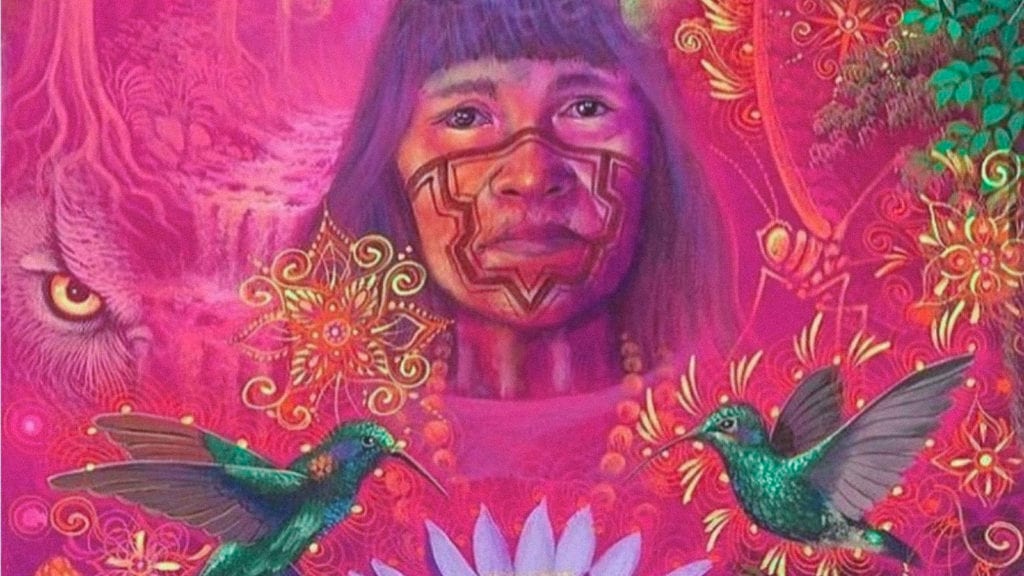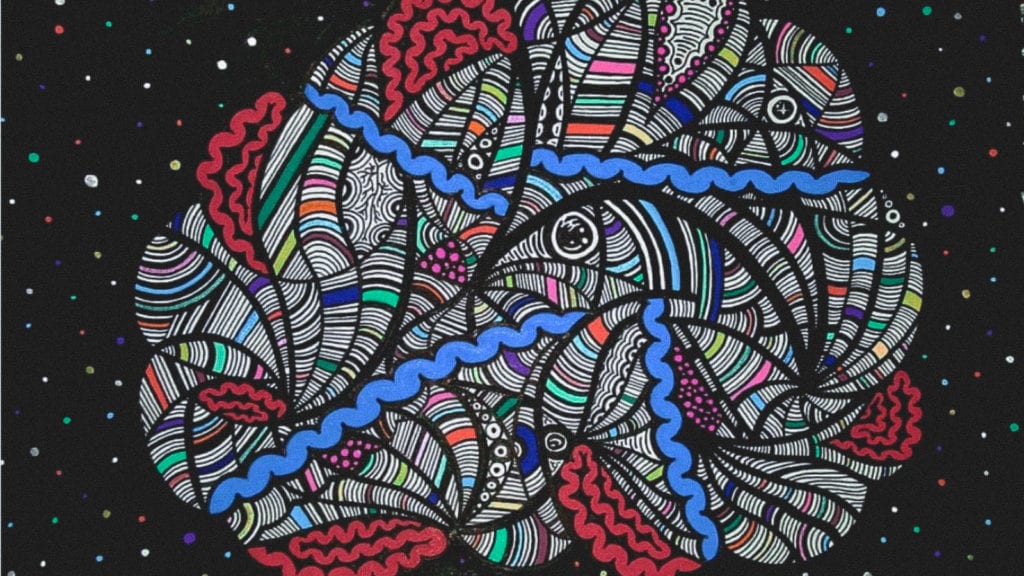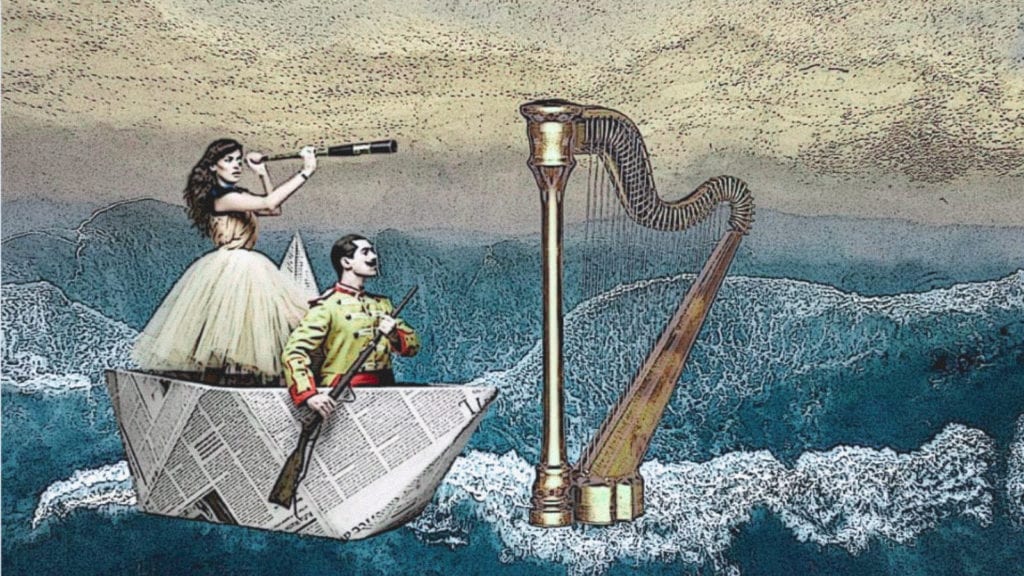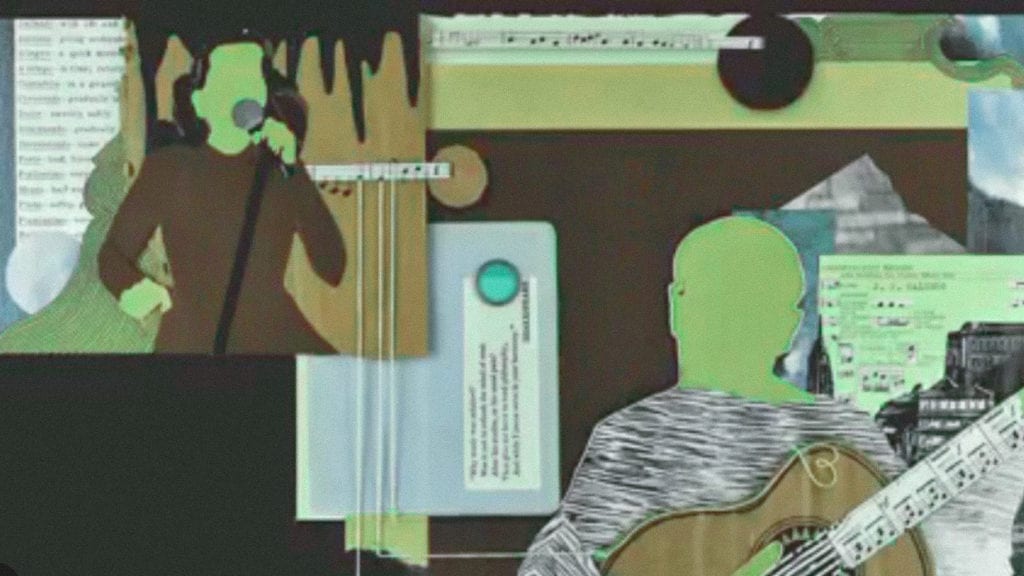It’s been more than centuries — it’s been millennia. Long before young people were congregating at festivals and concerts taking psychedelics, our ancestors were sitting around fires with psychedelics telling stories and playing music. The impulse to enrich the psychedelic experience with music is almost an intuitive one. The connection between music and psychedelics is something that all humans across all ages have recognised and embraced.
As science has it, the way that music is felt viscerally is actually a biological phenomenon. There’s such a thing as “music-evoked emotion”, and psychedelics might be able to amplify that phenomenon, making us more emotionally connected to the music.
Music and the use of psychedelics might actually be as old as each other, which means what we’re learning about how music affects the psychedelic experience isn’t news. It’s just news to us.
From causing movement enough for a tear to fall to feeling the rhythm of music literally course through your veins as though it were coming from inside of you, music has a way of intensifying and giving meaning to the psychedelic experience.
In this article, we’re checking out the history of mixing music with psychedelics, a little bit about the science, and ways you can consider using music to guide your psychedelic experiences.
The history of music and psychedelic therapy.

It’s too hard to put a beginning to “music” in terms of human history. As far as we’re aware, it’s existed as long as humans have. The oldest musical instrument to be discovered was an old bone flute dating back around 35,000 years ago. Some scientists even believe that music evolved to support the emotional communication and development of human beings. Basically, our brains were hotwired with music long before we ever “came up with it”.
Psychedelic use is also a very old habit of human beings. Old cave paintings don’t just tell stories of Pharaohs and slaves and nomads — they also tell of the different psychedelic plants that humans were using. Cave art as old as 7000 to 9000 years old depicts mushrooms in Algeria and Spain.
Almost every religion puts an enormous emphasis on music — in that it’s a way to connect with God. Humans treated music this way even before organised religion, where it was commonly used in spiritual practice and ceremony. Until now, many of these ancient tribes retain their ritual use of psychedelic plants such as the Shipibo in Peru and the Shuar in Ecuador who drink Ayahuasca as a means of healing and spiritual connection.
Before LSD was illegal, there was some research into its effectiveness to treat psychological issues. Music was identified early in the research as a contributing factor to better outcomes. It was clear that music could affect the subjective drug experience immensely, and it didn’t take long to realise that music was an important aspect of the set and setting to drive therapeutic responses.
Essentially, humans were performing “music therapy” long before we ever even had a term for it. Music was therapy in whichever form it came, and especially when it was experienced alongside psychedelics.
Modern neuroscience on how music and psychedelics come together.

Music triggers complex neural activity in the brain, causing activity in parts of the brain that govern reward and emotional regulation. The regions of the brain recruited during a music listening experience partially overlap with the brain regions that are recruited during a psychedelic experience. This begins to show us why music might sound like it’s “on steroids” when we’re under the influence of psychedelic drugs.
Psychedelic drugs such as magic mushrooms, LSD, mescaline, and Ayahuasca have a strong affinity for the serotonergic system of the brain. Sleeping and mood are amongst the things that serotonin affects. Brain stem serotonergic neurons are implicated in the neuronal responses elicited during auditory processing. This is an example of the kind of overlap in brain activity between psychedelics and music.
In one study, subjects were given LSD and while listening to music, their brains were inspected using MRI. LSD didn’t just alter the perception of music, it also altered the acoustic qualities of the music that were registered in the brain. The researchers observed spectral complexity across multiple different brain networks, exemplifying the complexity with which music affects our brains under the influence of LSD.
Other researchers have demonstrated that LSD increased the “meaningfulness” of music, primarily shown through increased brain activity in areas previously linked to music listening, autobiographical memory, and emotional processing. This is a fancy way of saying that it seems LSD gives us better resources to use music as a tool for recovering memories, processing emotions, and recalling other feelings linked to music.
It seems that psychedelics don’t just have a great impact on how we experience music, but that music has a great impact on how we experience psychedelics. It seems that they are synergistic in that both of them seem to potentiate the other. The combination of music and psychedelics increases the communication between different brain parts, creating a subjective experience all together very different from how we would normally experience reality.
The implications of music for psychedelic therapy.

Thus far, psychedelics have shown promising potential for the treatment of a range of different psychological concerns. Though it’s a significant deviation from conventional therapy (requires few sessions, is effective nearly immediately, relies on the subjective experience), the direction is extremely promising.
The reason this is funny for science is because when it comes to medication, we typically research how much is safe, how long it takes to be effective, and how it affects other organs. We don’t usually bother to spend much time understanding in which environment its best suited to work. This is because in modern medicine, the environment is the body, and the subjective experience is the outcome, not the means of therapy. I.e., not feeling depressed is the outcome of using antidepressants. Mushrooms and LSD work in a different way, where the subjective experience may be totally different from the outcome, but is a means to the outcome nonetheless.
So when it comes to understanding how to use psychedelics in therapy, it’s becoming increasingly important to understand which factors affect the experience and how those factors can be used to drive the experience. For all intents and purposes, this is what shamans do when they use herbs, aromas, and music during ritualistic ceremonies with psychedelics.
In one study that used psilocybin, researchers found that participants emphasized the importance of the music during their experiences. It often correlates with the mystical experience, which in and of itself is thought to contribute to the long-lasting therapeutic effects of psychedelics.
The body of evidence that supports the use of music in psychedelics is very small, but it provides a body of evidence nonetheless that music is an important modulator of the psychedelic experience. The quality of the music is equally as important as its existence, suggesting that an individualized music program for the individual is the best way to optimize the psychedelic experience, especially when it comes to therapy.
Tips for using music during your psychedelic experience.

You don’t have to worry about brain parts and all of that while you’re enjoying music on psychedelics — it’s all happening without your input. You get to just sit back and enjoy. So what’s the best way to do that?
Like we mentioned, a personalized, tailored music playlist is the best way to set yourself up with music for your psychedelic experience. Think of it as if you’re going to take yourself on a journey — music can be like the “path” that you walk. If you were creating a set-list for people to dance to, you would create a “movement” through different feelings and tempos, for example. You can and should do this with your playlist for psychedelics.
You might choose to start with music that is calming and relaxing so that when your journey is beginning, you feel calm and focused. The middle of your playlist might contain deeply contemplative music or classical music that moves into different keys quickly to facilitate abstract thought and emotional processing. You might choose to end your playlist with inspirational music so that when your journey is over, you leave feeling refreshed, renewed, and ready.
It’s important to choose music that makes you feel good and isn’t “abrasive” to the senses. After all, your senses will be extremely heightened after consuming psychedelics. You might listen to hardcore techno on your way to work or to screamo when you’re with your friends, but consider how that might sound when your hearing is amplified — and whether those feelings are conducive to psychedelics.
Music is a personal choice — but a really important one when it comes to psychedelics. We all together recommend having good music going during your psychedelic journey to facilitate healing. And it will be all the better if you personally curated that music yourself.
What kind of music do you like to listen to while using psychedelics? Let us know your favourite tunes for tripping in the comments!